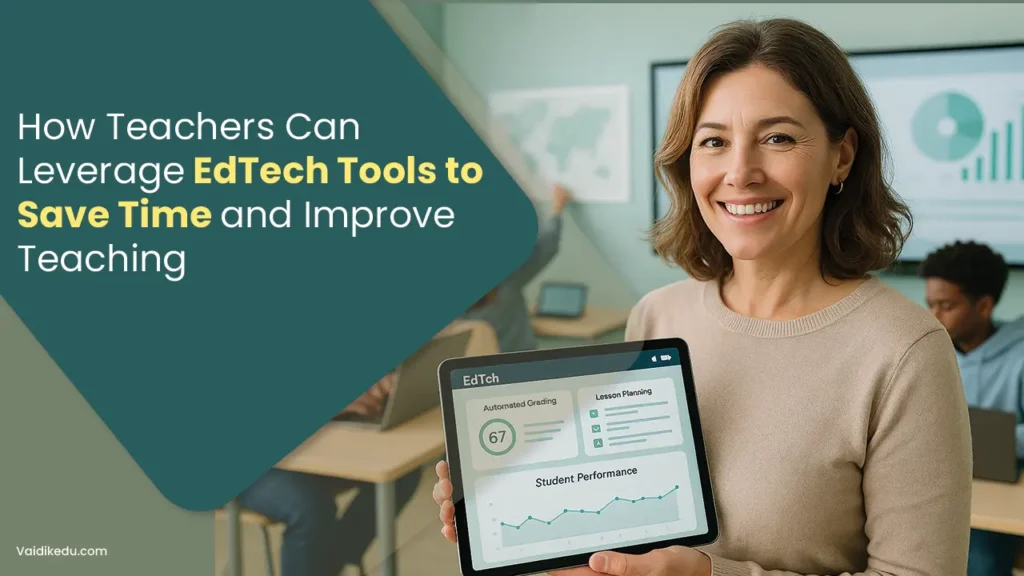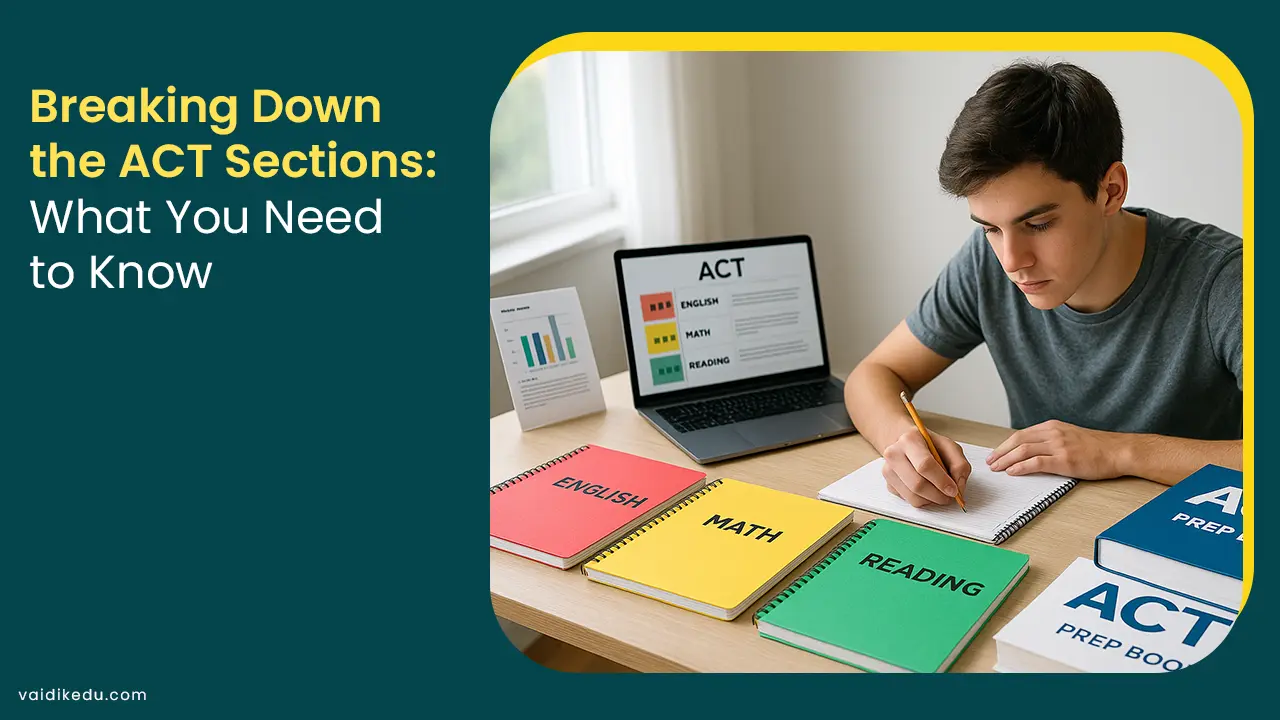Teaching is both a science and an art. It entails lesson planning, assignment grading, classroom management, and attending to the requirements of each individual student. If you ask any teacher, they will tell you that time is their most precious resource–and there is never enough of it. EdTech solutions are transforming education by improving teaching methods, automating repetitive processes, and personalizing the learning experience.
To prepare for a lecture, picture a teacher sifting through paperwork or manually grading quizzes for hours. Imagine now that the same chores could be completed more quickly with a few clicks. The outcome? More time to devote to what matters most: fostering and motivating young minds.
We’ll look at ways educators can use EdTech technologies to improve their teaching and save time in this blog. These tools are changing education as we know it, from fostering creativity in the classroom to automating administrative work.
Educators Can Use EdTech Technologies To Improve Their Teaching And Save Time
- Streamlining Administrative Tasks
One of the biggest time-sinks for teachers is administrative work attendance tracking, lesson planning, grading, and more. EdTech tools streamline these procedures so that educators can concentrate on what they do best teach.
- Automated Attendance System: Programs such as ClassDojo and PowerSchool automatically track attendance, produce reports, and even alert parents when a student is absent. It is no longer necessary for teachers to waste valuable class time yelling names.
- Digital Gradebooks: Google Classroom and Edmodo are two examples of tools that let teachers enter grades digitally, compute averages automatically, and quickly create performance reports.
- Calendar Management: Teachers may easily interact with colleagues, create reminders for critical assignments, and plan their schedules with the aid of apps like Planbook and TeacherKit.
Every week, teachers save hours using these tools, which frees up time for lesson planning or one-on-one student interaction.
- Improving Content Delivery And Lesson Planning
It can be difficult to create lesson plans that are both effective and enjoyable, particularly when accommodating various learning styles. EdTech tools increase the effectiveness of lesson planning and the impact of content delivery.
- Interactive Lesson Creators: To keep students interested, teachers can create interactive presentations, incorporate quizzes, and incorporate multimedia components using programs like Nearpod and Prezi.
- Access To Pre-Made Resources: Curriculum-aligned lesson plans, worksheets, and activities are readily available on websites such as Teachers Pay Teachers and Khan Academy.
- AI-Driven Suggestions: To save hours of brainstorming, programs like ChatGPT or ScribeSense may generate summaries, offer lesson ideas, and even construct original quizzes.
In addition to saving time, these resources guarantee that courses are active, interesting, and adapted to the needs of the students.
- Making Grading And Assessment Easier
Although it takes time, grading is an essential activity. EdTech solutions now provide creative approaches to more effective student assessment Development Services.
- Automated Grading System: Websites such as Quizizz and Kahoot grade tests automatically and give students immediate feedback.
- Rubric-Based Grading: Teachers can use pre-established rubrics to mark essays and projects using tools like GoReact and Turnitin, which ensures uniformity and saves time.
- Data analytics for assessment: By analyzing student performance trends, programs such as GradeCam and Plickers assist teachers in identifying prevalent problem areas.
These tools provide teachers with useful insights on students’ progress and do away with the necessity for manual corrections.
- Encouraging Classroom Management
It can be difficult to keep students engaged and disciplined in a classroom. EdTech products offer innovative solutions for efficient classroom management.
- Behavior management tools: Teachers can monitor and reward good behavior with apps like ClassDojo, which promotes open and cooperative classroom management.
- Seating Chart Tools: Teachers can design ideal seating arrangements according to the needs and dynamics of their students using platforms such as SmartSeat.
- Apps for noise control: Resources like Too Noisy track noise levels in the classroom and give students visual clues to help them self-regulate.
These tools save teachers time and effort by minimizing disturbances and creating a positive learning environment.
- Customizing Education For Students
Since every student learns differently, it can take a lot of time to accommodate these differences. EdTech solutions allow for personalized instruction without putting too much strain on educators.
- Platforms for Adaptive Learning: Programs such as DreamBox and i-Ready modify the level of instruction according to student achievement, guaranteeing that every child advances at their own speed.
- Learning Management System (LMS): Websites such as Canvas and Blackboard give teachers the ability to create customized assignments, monitor student progress, and have direct conversations with students.
- Gamification: Learning becomes enjoyable and participatory with apps like Prodigy and Duolingo, which keep students interested while monitoring their progress.
Teachers can guarantee that each student gets the attention they require without compromising their own time by automating differentiation.
- Working Together with Parents And Peers
Effective teaching often involves teamwork–whether it is collaborating with colleagues or communicating with parents. These interactions are made simpler by EdTech technologies.
- Collaboration Tools: Teachers can communicate more easily by sharing resources, talking about tactics, and organizing events thanks to platforms like Microsoft Teams and Slack.
- Parent Communication Apps: By bridging the gap between home and school, apps like Remind and Bloomz enable teachers to easily share student progress, set up meetings and send updates.
- Shared Resource Libraries: Teachers can store and distribute instructional resources with colleagues using platforms such as Dropbox and Google Drive.
These techniques reduce the amount of time spent on meetings and face-to-face communication while fostering a sense of community.
- Encouragement of Professional Growth
Teachers need to pursue continuous education in order to stay up to date with the latest developments in both education and technology. EdTech tools provide opportunities for professional growth without interfering with regular routines.
- Online courses: Courses on innovative teaching methods, subject-matter expertise, and technological integration are available on websites such as Coursera and Udemy.
- Webinars And Virtual Conferences: Teachers can easily attend industry events and gain knowledge from professionals by using platforms such as Zoom and Eventbrite.
- Libraries of Resources: To inspire innovative teaching strategies, websites like TeachThought and Edutopia provide case studies, videos, and essays.
By utilizing these resources, educators can advance their careers and hold onto their leadership roles.
Conclusion
EdTech tools are not just a luxury, they are a necessity in today’s fast-paced educational landscape.These technologies enable teachers to concentrate on what they do best by simplifying administrative duties, improving lesson planning, making grading easier, and customizing learning experiences.
Using technology in the classroom not only saves time but also boosts teacher and student satisfaction and productivity. As more schools adopt EdTech, the possibilities for impact and innovation are endless.
Frequently Asked Questions
EdTech tools are technology-driven solutions designed to enhance teaching and learning, including apps, platforms, and software for classrooms.
They automate tasks like grading, attendance tracking, and lesson planning, freeing up time for more meaningful activities like teaching and mentoring.
Yes, interactive and gamified tools like Kahoot and Quizizz make learning fun, boosting student engagement and participation.
Challenges include a learning curve for new tools, technology glitches, and ensuring equitable access for all students.









